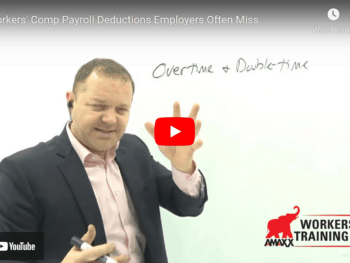Yesterday, the Federal Reserve announced balances on consumer credit cards contracted by $7.4 billion in February, which translates to a 9.7% annual rate decline, the largest since 1976. American households, aided by reduced credit lines from banks, are tightening their belts.
However, the overall credit build-up of the past decade weighs heavy on consumers as delinquency rates and charge-off claims continue to rise.
Employers have been busy paring payrolls, but are also plagued by deteriorating workers’ compensation loss experience. While exposure levels decrease, premium rates remain relatively unchanged. The result is, as a percentage of payrolls, workers’ compensation costs are rising.
PROACTIVE STANCE REQUIRED
Much like the U.S. government, employers must intervene and stimulate the process of stabilizing the cost of existing claims and invest time and effort to prevent history from repeating itself as our economy recovers.
For existing claims:
- Demand a comprehensive service plan from your broker or agent. A detailed and complete analysis of your portfolio is required, including a financial target identifying the anticipated future cost of existing claims. Insist this be an ongoing project, not an exercise to be completed just prior to the renewal.
- Get behind the numbers:
a. Is loss data adjusted for subrogation recoveries?
b. Injury types-trends? Do injured employees seek medical treatment from the same physician? - Medical Only claims – don’t be dismissive. Medical costs are outpacing the rate of inflation by a 4 to 1 margin.
- Utilization of medical bill re-pricing: Are you really saving costs or providing additional revenue to your claim administrator?
Planning for the current period:
- Implement safety measures. Some states provide a “credit” when an employer retains a safety consultant as part of its overall safety plan.
- Consider a “deductible” for medical only claims. (subject to various state laws)
- Verify that large losses have been properly limited. Death and second injury fund claims are two examples.
In concert with your service providers, employers can apply their own version of a “stress” test to understand the liabilities that have been accrued, identify appropriate adjustments to those liabilities, and continue to demand a focused attention not to allow those liabilities to grow.
Michael Ferreira is the President of Safegate Risk Consulting, LLC. He has been in the insurance industry for many years and has expertise in brokerage, underwriting and claims. While in the brokerage industry, he was the client account executive for Walmart. He can be reached at: 917-767-9123
WC Calculator www.ReduceYourWorkersComp.com/calculator.php
TD Calculator www.ReduceYourWorkersComp.com/transitional-duty-cost-calculator.php
WC 101 www.ReduceYourWorkersComp.com/workers_comp.php
Do not use this information without independent verification. All state laws are different. Consult with your corporate legal counsel or other professionals before implementing any cost containment programs.













